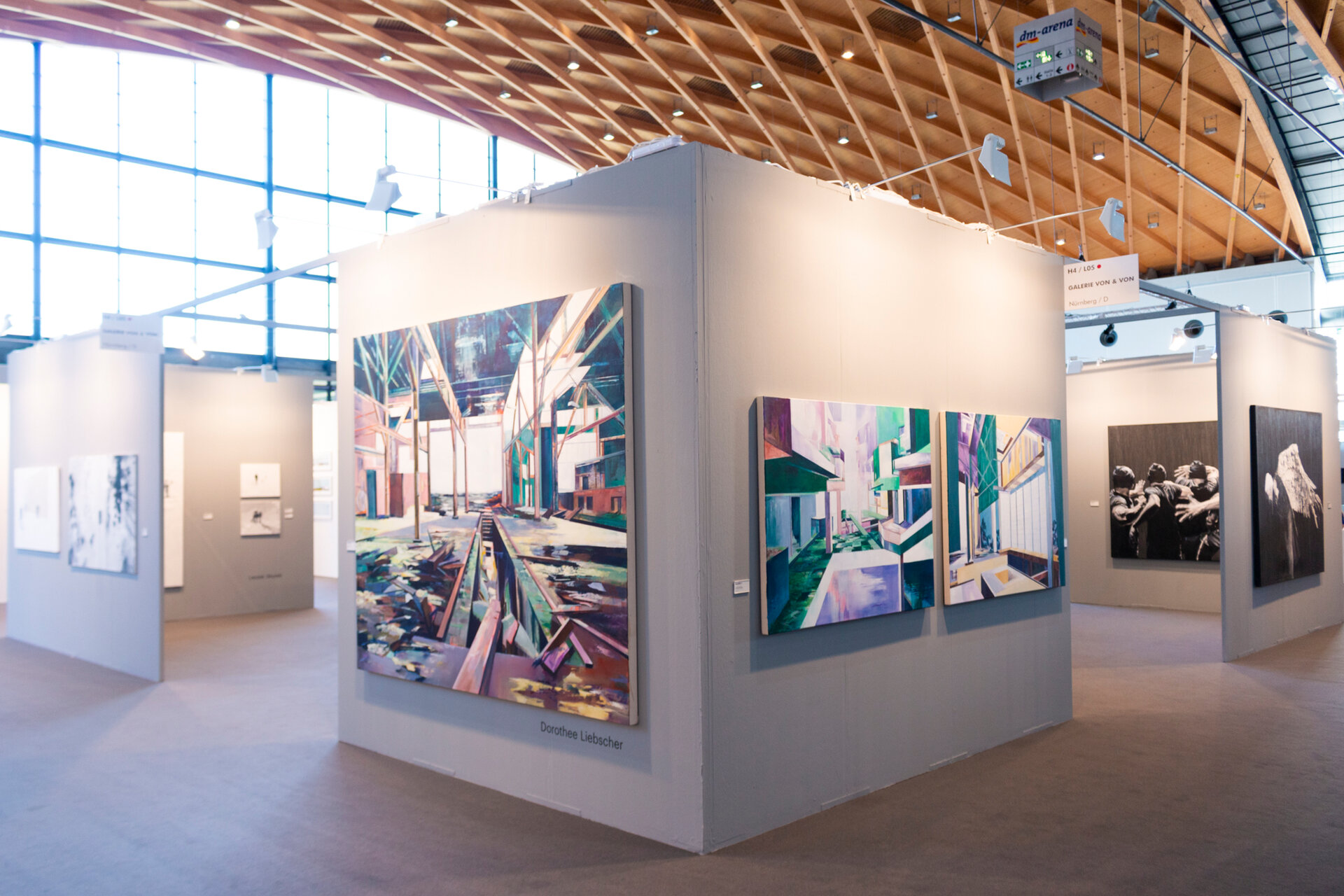
Art Karlsruhe
21.Feb - 24.Feb 2019
At this year's Art Karlsruhe from February 21-24 in Hall 4 / Booth L05 we present on 100 sqm new works by
- Paul Jacobsen
- Alfred Haberpointner
- Dorothee Liebscher
- Constantin Schroeder
- Leszek Skurski
- Leif Trenkler
- Miriam Vlaming
We are looking forward to your visit!

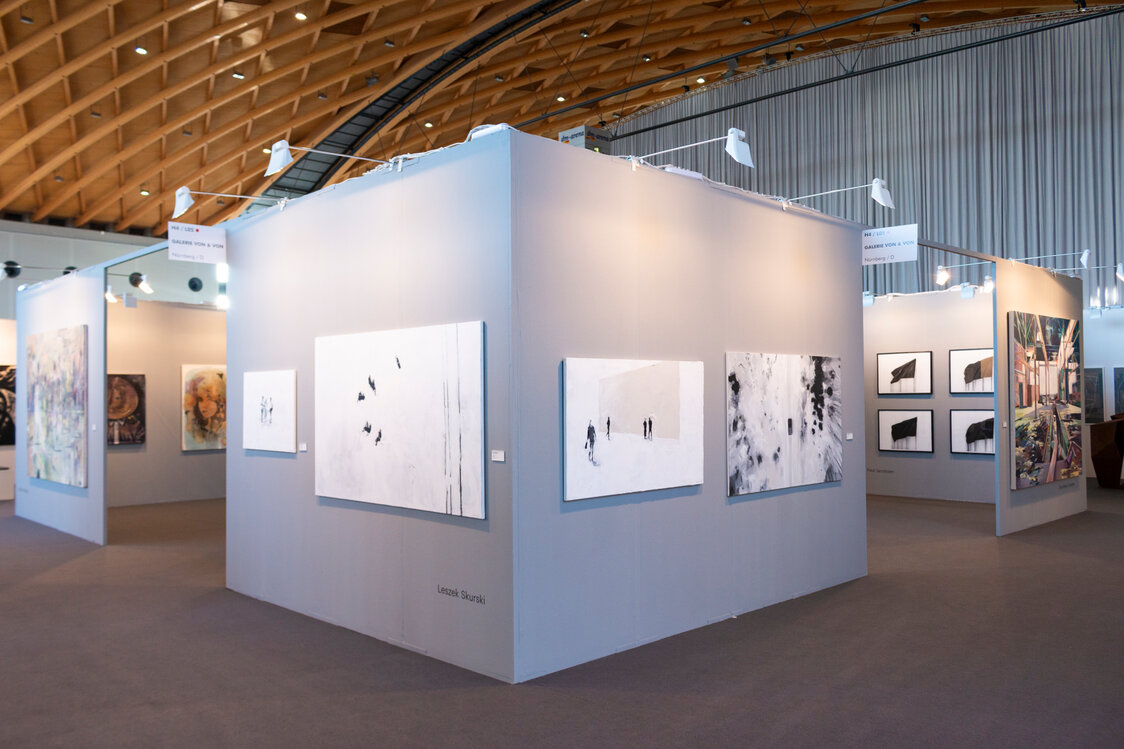
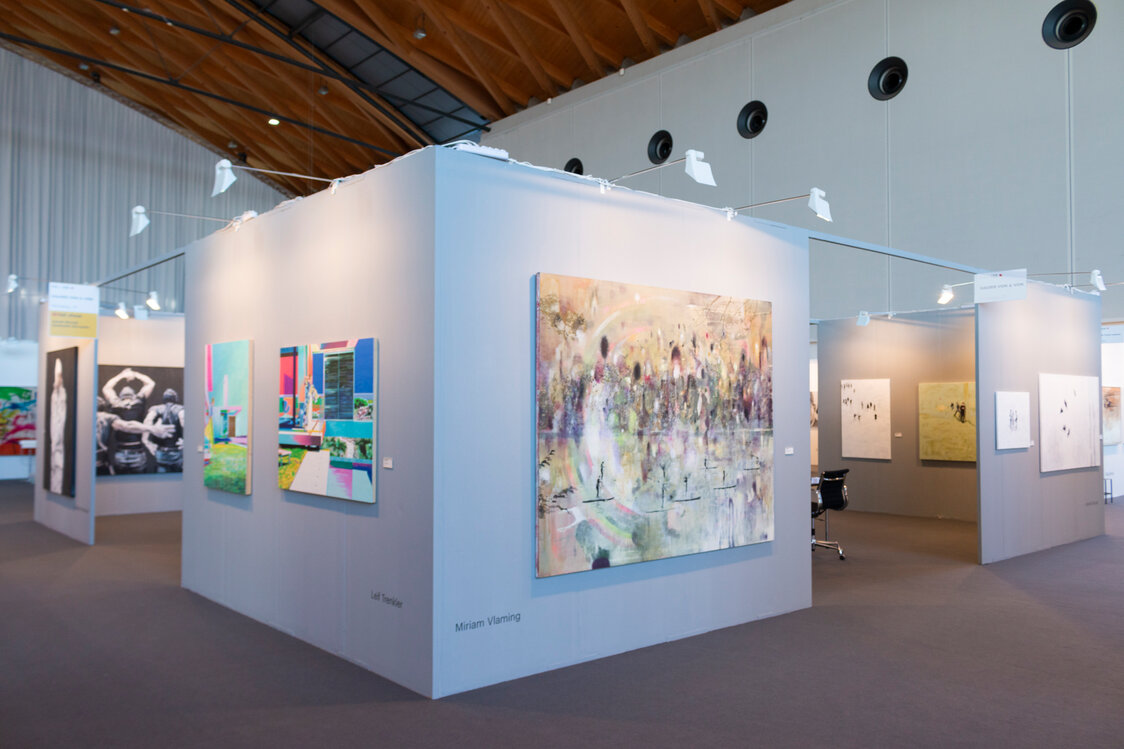
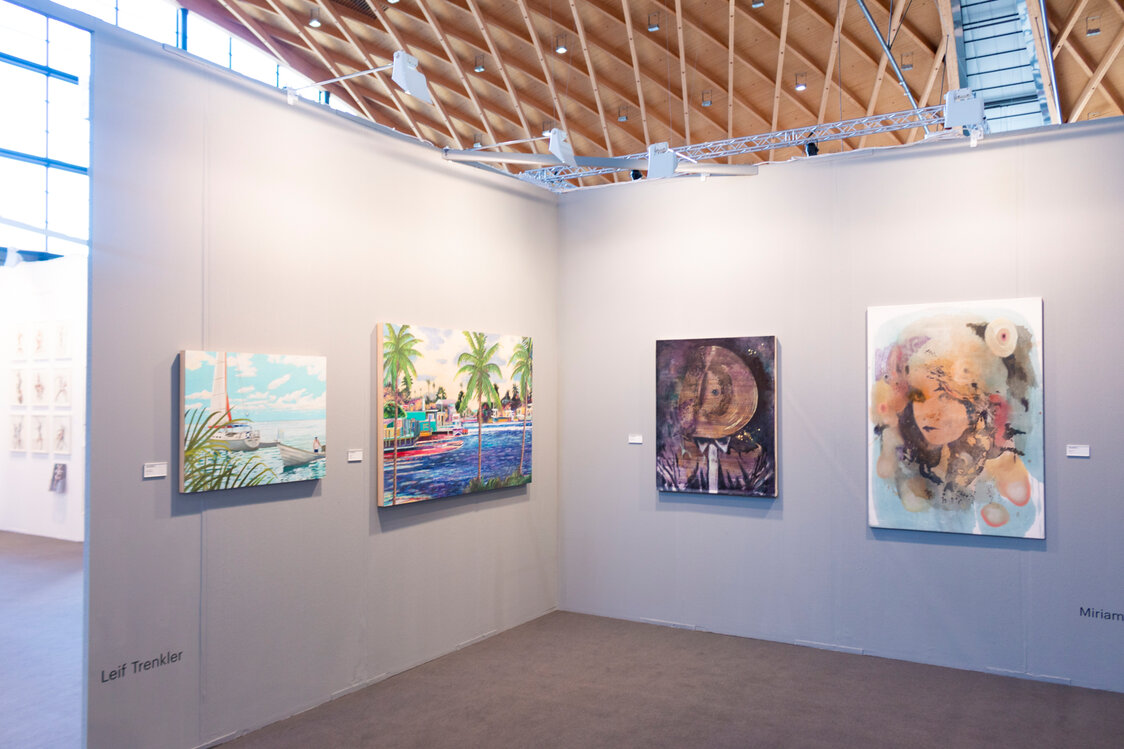





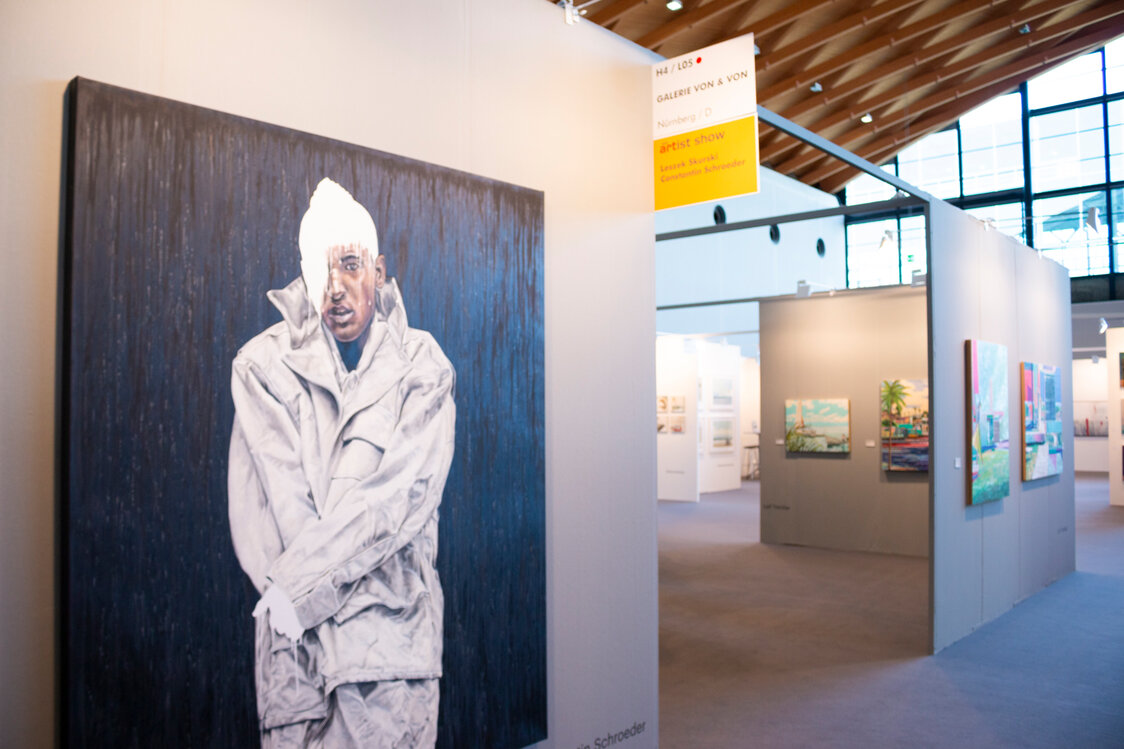
Leif Trenkler
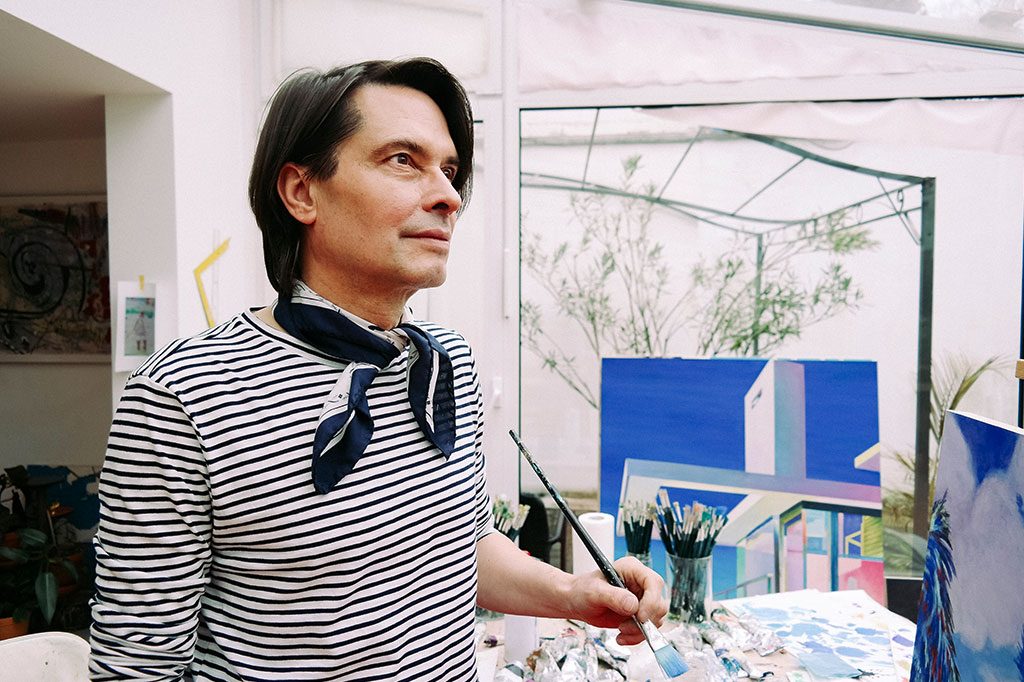
Leif Trenker, a graduate of the Städelschule in Frankfurt, is considered an important initiator of the New Figuration movement in Germany. In his works, which oscillate between realism and surrealism, the artist, who lives and works in Cologne, examines the effect of light and shadow on architecture, landscapes, and figures. There is deliberately no clear differentiation between fiction and reality, which becomes evident in the expressive and intentionally overdriven use of color in his pictorial worlds. Thus, through a poetic sense of reverie, he disrupts the ordinary, architectural, or natural space and draws in an exciting, fantastical dimension, where the mere visual quality fascinates and at the same time represents his unique style. His paintings on birch wood are instantaneous moments, where figures are mostly depicted in the foreground. Thematically, his work focuses on childhood memories, street and nature views, and scenes of everyday life and parties.
To the artist page
Constantin Schroeder

Constantin Schroeder's figurative paintings are impressive, moving images with a profound sense of depth. His pictorial protagonists are fascinating characters that never let us go. Internalizing the present with all its complexities, he uses a very reduced color palette. Mostly executed in large formats, the scenes captivate the viewer with their characteristic narratives. Schroeder reaches deep into the archive of the human psyche. His works reveal an enigmatic iconography, which includes young heroes posing interpersonal mysteries. The artist, who lives and works in Berlin and studied theology, philosophy, and art history, also illuminates the darker sides of life in an extraordinary, hyper-realistic style. These are powerful images that captivate us with their enigmatic pictorial content. Schroeder leaves some parts of the image white, which allows the viewer to develop his or her own interpretation and understanding of the image through open associations.
To the artist page
Leszek Skurski

On Painting, Silence, and the Flow of Time
Leszek, many of your collectors describe your paintings as especially calm, even meditative.
Do you yourself experience that calmness while painting – or is your studio life quite different?
It’s probably the colour white that makes this sense of calm feel so present. I never explicitly searched for calmness, but I do like working in an environment where I’m not distracted. That said, painting is not monotonous in my case – it’s very focused, and never truly quiet.
You work in Fulda and sometimes in Mallorca – a place of light and vastness – and you grew up in Poland.
How do these contrasts influence your sense of space, colour, and artistic identity?
That’s a question I ask myself a lot. I grew up in Gdańsk in the 1980s, where
everything was quite grey in general. I think that’s why monochrome compositions came so naturally to me. It’s not that I don’t enjoy working with colour – I do, very much. But somehow, ideas in white feel more honest to me.
Your recent monograph mentions the importance of “happy accidents.”
Has there been a recent moment when chance unexpectedly enriched a painting?
Yes, of course – usually out of frustration when something doesn’t work. Then I completely change the concept to free myself from the idea I no longer believe in. Sometimes it’s even worse. But sometimes, something remarkable emerges. Then I ask myself: What did I just do?! And it’s hard to repeat.
The playwright Heiner Müller is quoted there, saying: “It’s the leap that creates the experience – not the step.”
Has there been a particular leap in your practice or career that felt especially important?
Yes – but you only recognise it much later. That’s the strange thing about art. You try things, experiment, keep creating, and eventually you can look back and see the leaps. I still believe that my piece Abgang was such a leap. It was the moment I knew what I had to do – no doubts. A complete flow.
Many people wonder when you decide that a painting is finished.
Is there a clear moment, a specific feeling – or is it different each time? There’s that old truth among artists: it’s finished when it’s hung on the gallery wall. Over time, I think each artist develops a feeling for that particular moment – the sense that the work couldn’t be any better.
Your works are neither loud nor explanatory – and that’s what makes them timeless.
Is that openness something you aim for – or does it emerge in the process? Wait a minute! Some of my paintings actually scream at me. I know they have that energy – and they can also be extremely quiet. That kind of contrast heightens the atmosphere and maybe helps others step into my world. At least I hope so.
You’ve created nearly 3,000 works, yet you still seem curious and open to new directions.
Is there anything you’re determined to explore or change in the future?
It feels like I still need to paint ten times that amount. It’s hard to decide what to do next – and at the same time, it’s a great feeling to know the time is limited. That makes each decision more important. I’ve planned so many concepts, but there’s only so much time.
Just today I spent hours photographing and observing cliffs. An incredible subject – art historically, a total highlight. But to do it justice, I’d probably need two years. I still need to think about it.
One last question, almost poetic:
In many of your paintings, different moments seem to take place simultaneously – as if time is dissolving.
Do you feel a different sense of time while painting?
Yes, very poetic – and I think that’s partly why we do what we do, as artists: to stop time. Both within the artwork and during the process itself. The world keeps turning, and I invent my own time machine – using paint and dirty hands... oh, sorry: paint isn’t dirt.
To the artist page
Miriam Vlaming

In Miriam Vlaming's large-scale paintings in egg tempera, the painter breaks down the boundaries between man and nature as well as past and reality. She creates a harmonious symbiosis between these supposed opposites through hazy layers created by the application and removal of paint. In doing so, she allows the depicted figures to emerge from a natural, dreamlike environment. Through this aesthetic, Vlaming opens the viewer's eyes to the multifaceted aspects and philosophical questions of being human, which she addresses in her paintings. Miriam Vlaming always has the overall picture in mind in her mysterious pictorial worlds. She plays with ambiguous metaphors. “Disruptions and contradictions interest me ... the moment after or before something has happened...not the history." Her egg tempera paintings satisfy a deep human need for knowledge. The important member of the New Leipzig School studied at times with Neo Rauch. She was a master’s student under the direction of Arno Rink and is represented in numerous public and private collections.
To the artist page
Dorothee Liebscher

Dorothee Liebscher's paintings depict imaginary views of architectural and landscape spaces, which often portray run-down, abandoned buildings, partly overgrown by vegetation. For the artist, who lives and works in Leipzig, the investigation into spatial themes holds central significance. The viewer adopts the image protagonist role and experiences the architectural structures. Insinuated landscape views, as well as a deep horizon, convey a great sense of depth. This results in thoughtfully constructed spaces that interpret reality subjectively and reveal to the viewer a hidden world that always offers new mysteries and raises questions. The paintings feature a specific color palette and exist in a field of tension between nostalgia and utopia. Partially surreal pictorial worlds emerge on the canvas. Through the intertwining of reality, memory, and fiction, spatial compositions emerge that invite the viewer to embark on his or her own exploration of an unfamiliar, yet at the same time seemingly familiar world.
To the artist page
Alfred Haberpointner

Salzburg-born sculptor Alfred Haberpointner creates wooden sculptures that oscillate between an abstract, geometric form and a figurative image. With his work series spanning over the last two decades, Haberpointner proves how he has innovatively dealt with wooden materials and freed himself from the roots of craft-based, naturalistic wooden sculpture. In his "chopped images," he gives the wooden material an intense presence through systematic, rhythmic sections, which emerge through close observation and exploration of the textured surfaces and result in a dance between light and shadow. He is concerned with form in his works, particularly in the treatment of wood in all possible nuances and shadings. In each of his artworks, one can see the traces of the work process: Haberpointner subjects his reliefs and sculptures to a powerful, mechanical work process that leaves traces on the works. Through beating, chopping, and burning, textures emerge that give the works a relief-like surface, which lacks any mathematical precision and exudes a special aura. Alfred Haberpointner is represented in major art collections, such as the Würth Collection.
To the artist page